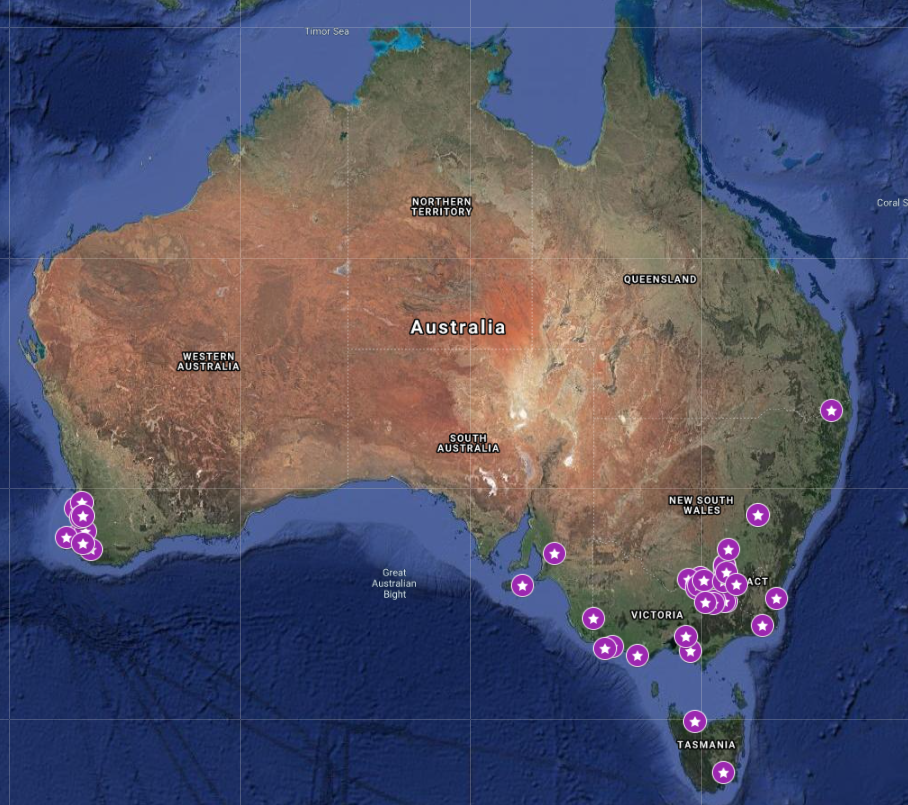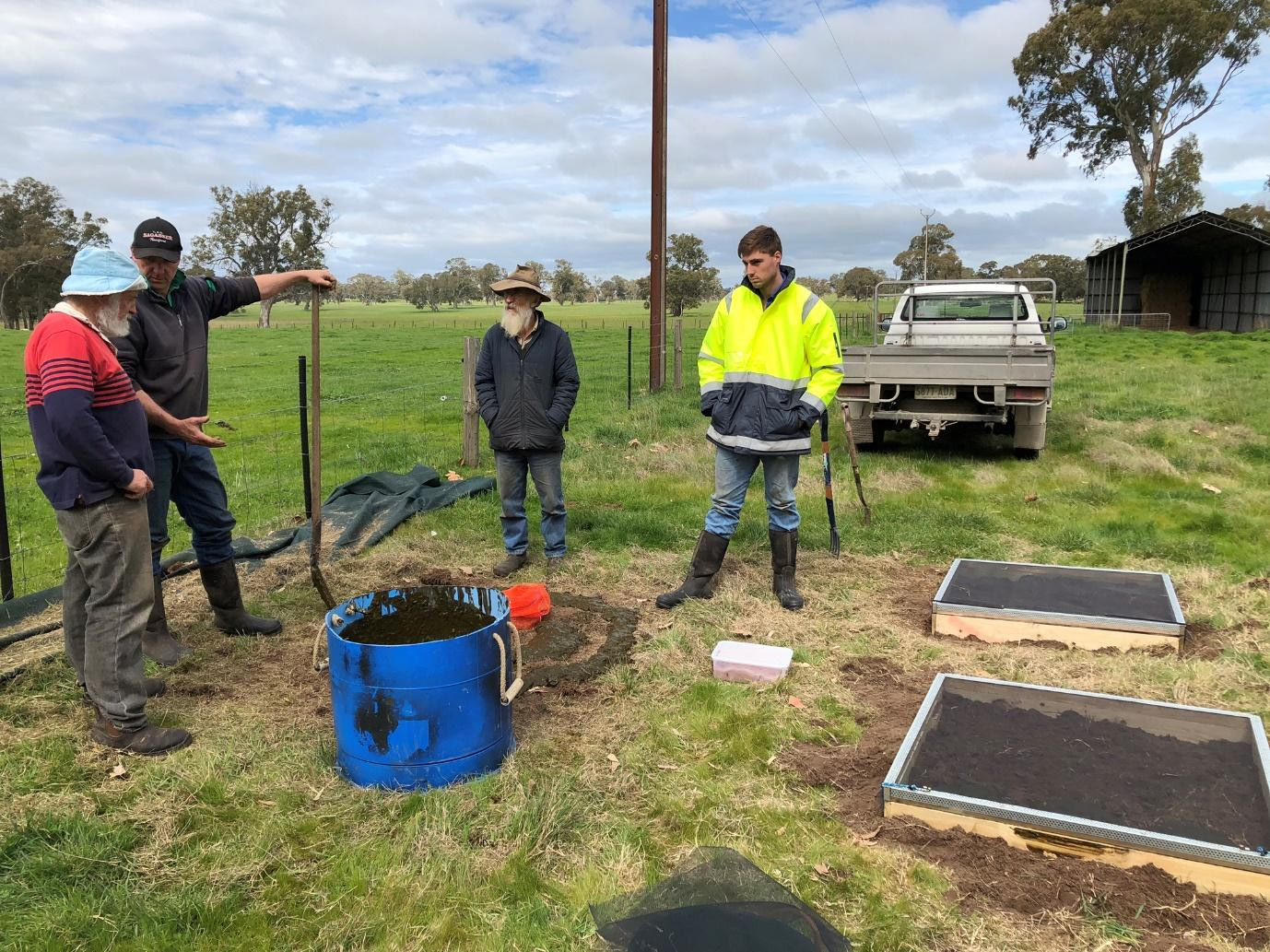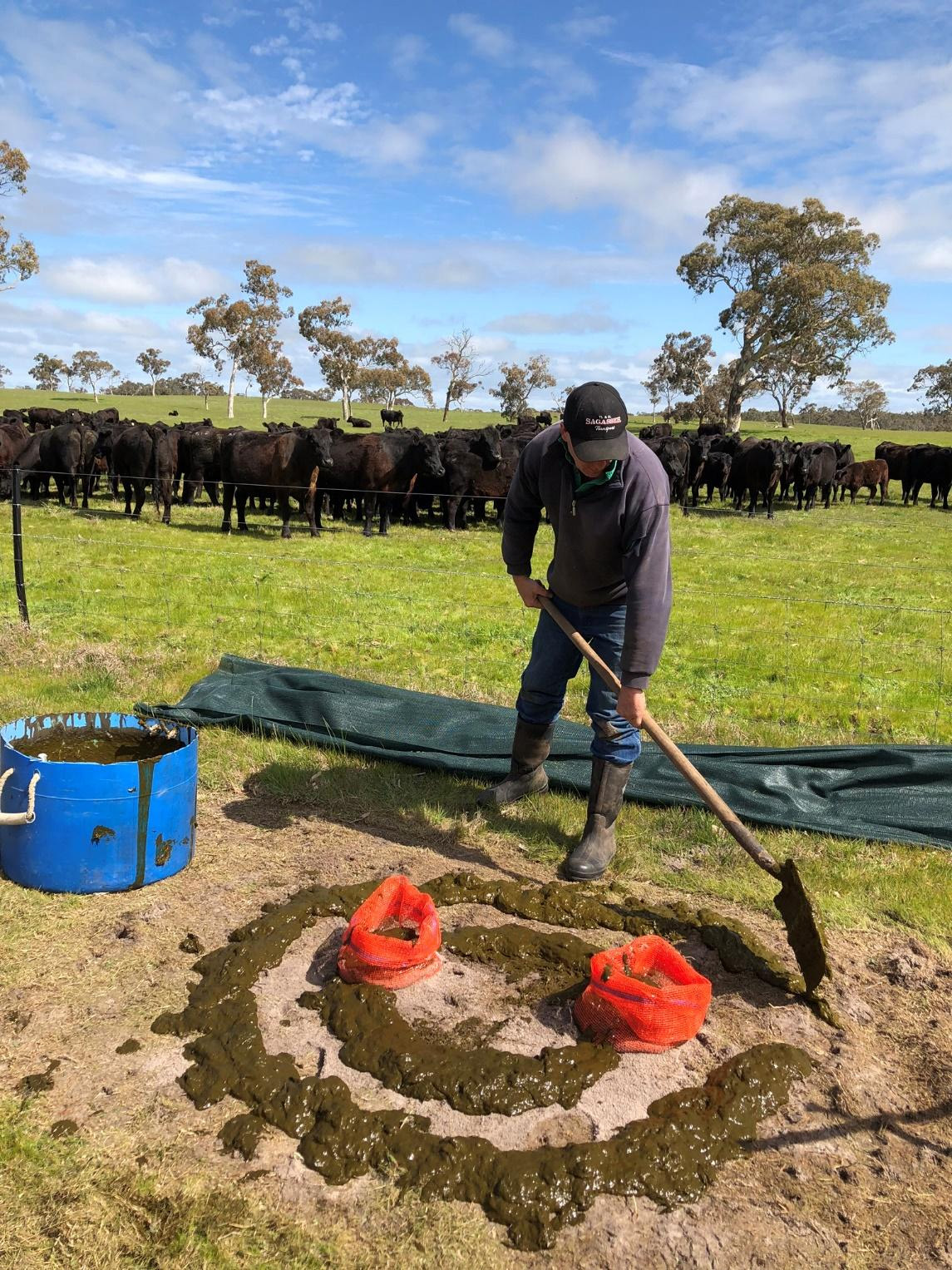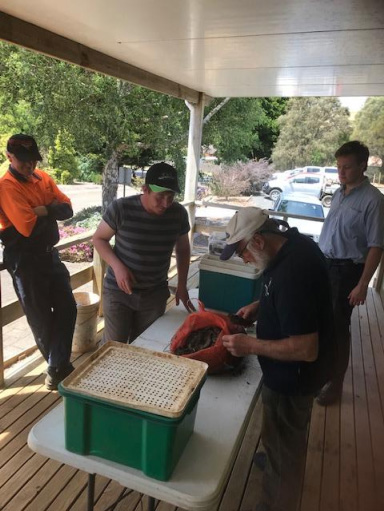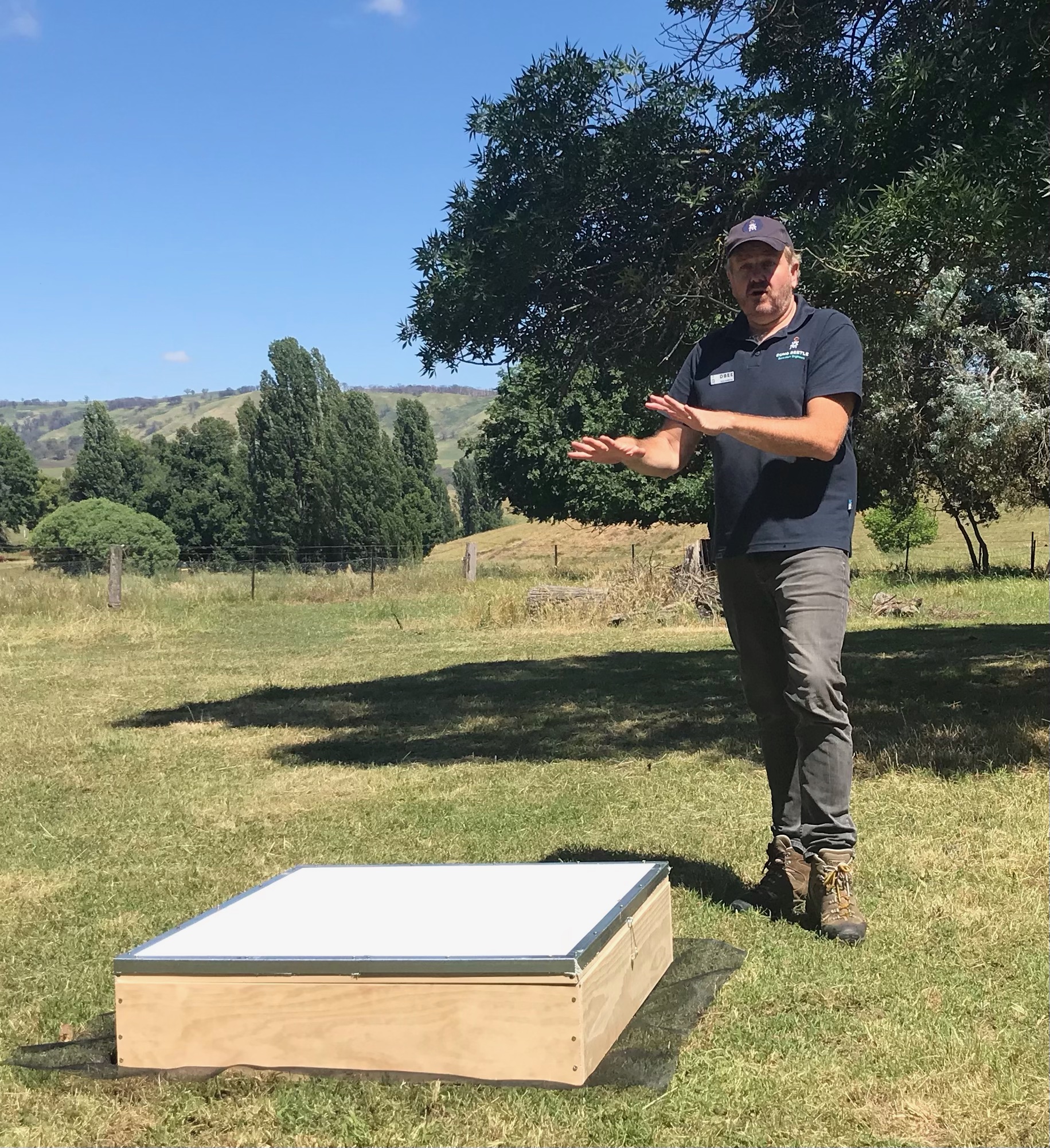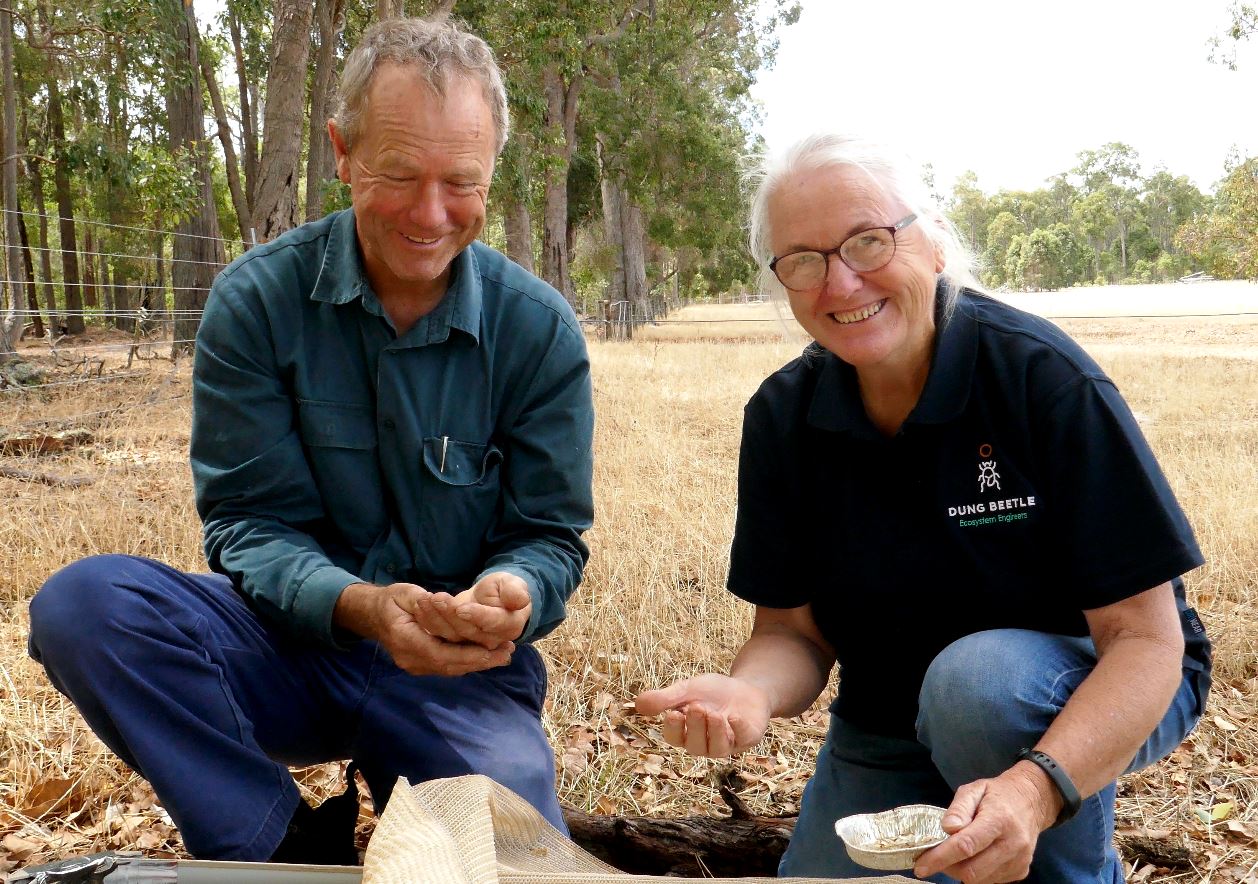The successful establishment of new dung beetle populations under Australian field conditions is frequently challenging. To facilitate establishment with low numbers of beetles, Dung Beetle Solutions International took a different approach, using on-farm nurseries in 2014 … and by 2020 two new species had been successfully reared in field nurseries.
Many dung beetle species introduced to Australia during the original CSIRO Dung Beetle Program (1965-1985) failed to establish once released in the field; for example, 14 species that were released in low numbers (average 841 beetles per species) failed to successfully establish, and 4 species, when released in high numbers (average of 5165 beetles per species) also failed. Two priority spring-active species (Onthophagus vacca and Bubas bubalus) had been introduced but had failed to establish. A second attempt was undertaken in 2012–2014 and in this case only low numbers of beetles were obtained for field release.
Therefore, in 2014, a different approach to field release was considered, using outdoor field nurseries. CSIRO provided Dung Beetle Solutions International with a small number of laboratory-reared O. vacca and B. bubalus and, in collaboration with Creation Care (an environmental company in SA), both species were successfully reared in on-farm field nurseries. By 2017, several thousand of both species had been produced.
In spring 2019, the Dung Beetle Ecosystem Engineer (DBEE) Project acquired 3,500 French O. vacca and 50 B. bubalus from Creation Care to begin a national field release program through the development of on-farm nurseries. Each nursery comprised small field cages and an arena (a large shade cloth sheet pegged to the ground) (see photo 1). The field cages were prefabricated in Adelaide and dispatched to collaborators across southern Australia in flat packs to be assembled on-farm. For O. vacca, 50 beetles were added to a field cage and 170 beetles were placed under the arena (see photo 2).
Six pairs of B. bubalus were released into each of three nursery cages in South Australia and one in New South Wales. The beetles were fed weekly for several months and bred successfully in both locales.
As part of this extensive release program, Bernard and Loene Doube embarked on a field trip to introduce the French beetles to their new farmer nursery homes, visiting numerous locations across Victoria, South Australia and Tasmania. Included in the itinerary were stopovers at Portland with Kate Joseph (South West Prime Lamb Group), at Mitta Mitta with Judy Cardwell (Mitta Valley Landcare Group) and in South Gippsland with Adam Tran (Loch). Later, nurseries in South Australia with Anne and Todd Woodard and in north-west Tasmania with Tom O’Malley (Cradle Coast Natural Resource Management) and Graeme Stevenson (Senior Citizen of the Year for Tasmania 2020 in recognition of his dung beetle achievements) were also set up (see photo 3). Most recently, Russ Barrow and Graeme Heath from Charles Sturt University have been establishing field nurseries in properties across the Riverina, South Coast NSW and Victoria.
The field cages used for O. vacca have proven reasonably successful some locations in Western Australia, South Australia, New South Wales, Victoria and Tasmania and up to 4–6-fold increases in numbers were achieved in some favourable cool, wet locations but the beetles generally failed to thrive in hot, dry conditions experiencing drought.
In winter 2020, the DBEE project introduced a second strain of O. vacca (from Morocco). Further field releases of both strains (and a hybrid variety) are currently taking place across southern Australia. However, beetles continue to be in short supply, so a revised farmer nursery protocol has been developed to allow small numbers (100 beetles per nursery) to be distributed among collaborating farmers and Landcare facilitators across southern Australia. A video describing on-farm nurseries is available on the DBEE website.
